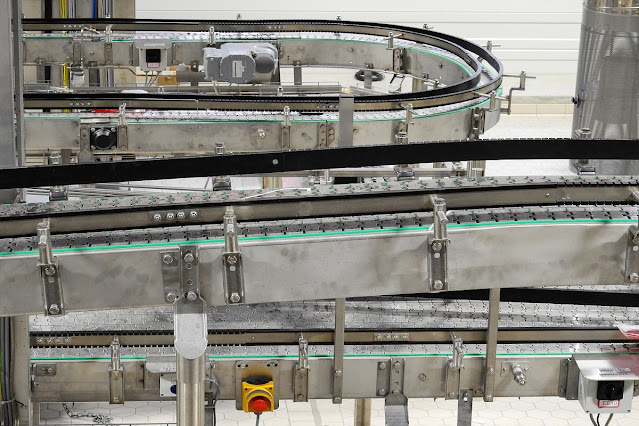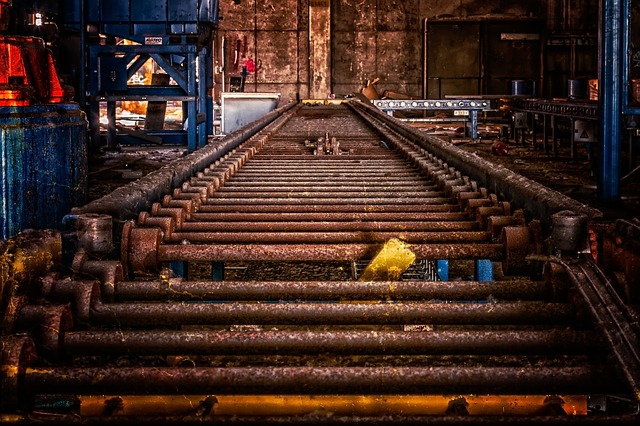7 Tips Everyone Should Know About for Selecting the Right Conveyor Type
Knowledge is power. And selecting the right conveyor type for your project is an important decision, which can be made easier with some good knowledge. Here are seven tips you should keep in mind when selecting the best option:
Look Carefully at the Product Specifications
Product specifications are
essential for selecting the right conveyor type, so take a careful look at how
products will be conveyed. For example, if goods must arrive in a batch or as
they come off the assembly line, you can narrow down the types of conveyors to
belt and chain. When it comes to
selecting a suitable conveyor, look at their basic product specifications:
Product Dimensions. The product you're selecting a conveyor
should have dimensions that will allow the machine to be configured
appropriately. For example, belt and chain conveyors are often preferred
because they can accommodate virtually any shape or size of the load but check
to see how high or wide your products must be. If the product is not narrow
enough for a belt or chain, consider selecting a conveyor belt with the ability
to adjust.
Product Weight. The product you're selecting a conveyor for
should have an appropriate weight, or the machine may not be able to handle it.
Heavy items can wear out your equipment more quickly than lighter products. If
the loads are too heavy, belt and chain options are best for industrial use
because they don't break down easily and offer a higher load capacity.
Production Rate. The
production rate of the product will help you to choose a conveyor that can keep
up. You'll want a conveyor belt or chain which moves quickly and efficiently,
but it should also be capable of handling shift changes, so workers don't have
to wait for slow equipment. Belt and chain conveyors are known for moving at
high speeds. Knowing your production rate, alongside product length, will be
immensely helpful in selecting the right conveyor type with the appropriate
speed for you.
Product Type. The
type of product you're selecting a conveyor for will determine the best choice
for your needs. Sorting products and choosing a suitable conveyor is made much
easier when you know how things are produced. Knowing the product type is
essential to select a conveyor that works well with them, such as choosing a
chain over the belt for products like lumber.
Accumulation Requirements
Accumulation requirements can
vary greatly depending on the application. Therefore, when selecting the right
conveyor type, you will need to consider the maximum accumulation you expect
from this conveyor type; this is an important consideration when choosing the
suitable accumulator before selecting your actual conveyor. Whether that
accumulation is belted or roller, minimum or zero pressure, or fixed zone or
dynamic, selecting your conveyor system based on these considerations is the
key.
If the product is a complex
piece of machinery to handle and prone to malfunction, selecting a more
reliable conveyor may be necessary. Don't forget to take into consideration the
product information when you are reviewing your accumulation needs.
Conveyors often carry
hazardous materials, so selecting the correct type of material is crucial. The
material will need to withstand extreme heat, cold temperatures, corrosion, and
chemical challenges. Consider choosing a conveyor with the ability to operate
in different temperatures and conditions. You may need this adaptability,
especially when selecting crossbelt types.
Yes or No to Guide Rails:
A conveyor with the option of
selecting a guide rail can help you save money and space. In addition, choosing
a heavy-duty guide rail will give you more support than standard options if
your products require special handling.
First thing first, answer
this question: Do you need a guide rail? Some products don't, and some products
do. If you need one, make sure that you have proper rail spacing once you
install them, especially around a curve. Additionally, double-check that the
guide rails that you will purchase have "back-up" guides. That means
that if one of the rails needs to be removed for maintenance, the system will
still work correctly.
Cleaning Considerations
The type of material you are
conveying, along with its size and bulk, can impact the recommended cleaning
process. If your conveyor passes by an area where fine dust is present, you
need to consider selecting a conveyor that is easy to clean. This will keep
your maintenance schedule down and reduce the chance of dust getting into the
product you are conveying. This especially applies to the food, dairy, and
pharmaceutical industries.
Things to Consider When Washing Down Conveyors:
Water Pressure: Some need to have enough water pressure for
a sprayer to clean the conveyor effectively. If not, you'll just be wasting
time and money. On the other hand, some conveyors only need to be wiped down to
be clean. It all depends on your environment and the products going along the
conveyor.
Cleaning Chemicals:
If you select a conveyor that needs chemicals to be effective, consider
what is being used. If the chemical is very caustic and requires special
cleaning equipment, you'll have higher maintenance costs in the long run.
Conveyor Construction and Material
Depending on what you are
conveying and what industry you are in, the type of conveyor construction and
the material will also need to be considered. For example, some food and dairy
industries need a non-plastic chain conveyor and an endless belt with no joints
to pass the USDA requirements. Cleaning them will require some specific
washdown instructions to be followed.
Environmental Conditions
When selecting the right
conveyor type, consider first where you are going to put it and what kind of
products you are planning to put on it. If your conveyor is going to be exposed
to chemicals, extreme heat or cold, or wet and humid conditions, you will want
a material that is durable in all of these environments.
Let's get back to our dairy
industry example. Imagine you are conveying butter and cheese, and some of them
melted off and caused some of the lines to malfunction. Did your conveyor
survive the malfunction? This is when you will know if you have indeed chosen
the suitable conveyor for you.
Smooth Travelling and Transferring of the Products
This is important to look at
if your conveyor will be doing carton work or handling delicate materials. This
can also affect selecting the right motor type and control system you need for
that particular application. There are many types of product transfers, such as
gravity rollers, powered transfers, and side-to-side transfers, to name a few.
Ask for a demonstration on how does the conveyors you are choosing from works.
Seeing them in action will help you clinch your decision.
Conveyor Movability
Many times, your needs may
change, or you want to relocate your project for whatever reason. So, selecting
a movable conveyor is always a good idea. Some types of conveyors are easier to
move than others. Some may just need to be extended upwards or downwards to
occupy the available space. Either way, it never hurts to take all of these
possibilities when selecting the proper conveyor.
All of the mentioned tips are
very important when selecting the right conveyor type and system for your
project. If you get it wrong, you will have surplus space or a short inventory
room which is never a good thing. So, pay close attention to these factors, and
you will be selecting the suitable conveyor for your next project with ease.



Comments
Post a Comment